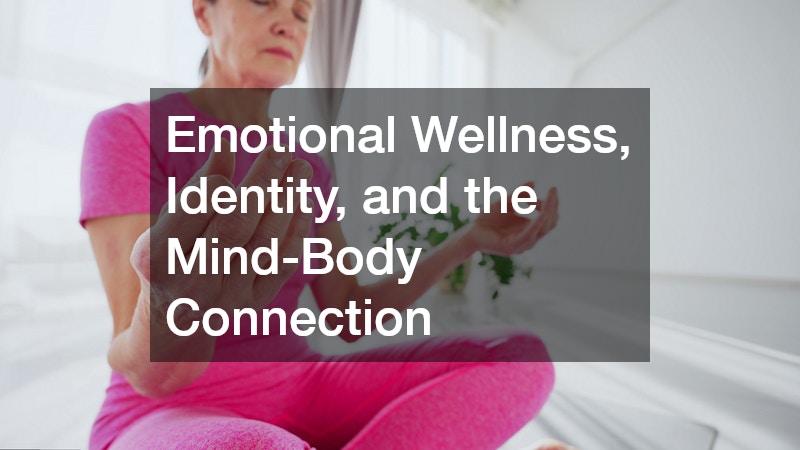The Science of Aging Beautifully What Actually Makes a Difference
Aging is a universal experience, yet how we age can vary dramatically from person to person. Some individuals maintain vitality, flexibility, and radiance well into their later years, while others feel the effects of aging sooner and more intensely. This difference is not a matter of luck alone. Modern research in biology, psychology, and preventive medicine reveals that aging is influenced by a combination of cellular processes, lifestyle patterns, emotional wellbeing, and strategic health support. The science behind aging well is far more encouraging than many people realize. The body is resilient, adaptable, and capable of growth and repair throughout life when given the right conditions.
Understanding these mechanisms empowers us to make choices that support longevity—not only in years lived but in the quality of those years. This means making space for nourishment, movement, mindful stress management, and sometimes professional treatments that address structural or physiological changes. The goal is not to chase youth, but to embrace a natural evolution of beauty, strength, and confidence across every decade of life.
Cellular Health, Genetics, and the Foundation of Longevity
The discussion of aging beautifully begins at the cellular level, where the most fundamental aging processes occur. Our cells contain telomeres—protective caps at the ends of chromosomes that shorten over time as cells divide. The shorter the telomeres become, the more quickly cellular aging accelerates. However, research demonstrates that telomere shortening is influenced not only by time but also by stress levels, inflammation, sleep quality, diet, and the body’s exposure to environmental toxins.
This means lifestyle has a direct impact on how cells age. Anti-inflammatory nutrition, regular exercise, and quality sleep help maintain longer telomeres and support mitochondrial energy production—both essential for physical stamina and cognitive clarity. Hydration also plays a major role in cellular health, which is why some people seek iv therapy to support nutrient absorption and hydration balance during times of stress or deficiency. While this type of therapy is not a replacement for long-term nutritional habits, it can provide a supportive boost, especially for those with demanding schedules or chronic dehydration.
One of the most fascinating aspects of aging research is neuroplasticity—the brain’s ongoing ability to form new neural pathways. This means our brains are continually capable of learning and adapting, even into late adulthood. Keeping the mind active through reading, learning new skills, solving puzzles, or playing music encourages the growth of new synaptic connections, protecting cognitive function as we age.
Maintaining this internal foundation is key to aging beautifully because it influences energy, mood regulation, physical strength, immune function, and overall resilience. When we care for our cells, we care for the entire system that shapes how we experience aging from the inside out.
Nutritional Strategies That Support Longevity and Metabolism
Nutrition is one of the most powerful influences on aging because food provides the building blocks for every cell in the body. Diets rich in whole foods, healthy fats, lean proteins, and antioxidant-rich fruits and vegetables help reduce inflammation, support gut health, and maintain strong immune function. Over time, these habits significantly affect how the body repairs itself, how the skin retains elasticity, and how the metabolism maintains efficiency.
For individuals working to maintain a healthy body composition as they age, support from a weight loss clinic may offer structured guidance, particularly if metabolism has slowed due to hormonal changes. Professional oversight can make weight management safer and more sustainable, reducing stress on joints and lowering the risk of chronic illnesses such as diabetes and cardiovascular disease.
Hydration is also crucial. Water helps regulate temperature, lubricate joints, support digestion, and maintain skin plumpness. Electrolyte balance plays a role in muscle performance and cellular function, especially during exercise. Omega-3 fatty acids, found in foods like salmon, walnuts, and flaxseed, support brain function and reduce inflammation, which is especially important since chronic inflammation accelerates cellular aging.
Protein intake often becomes more important with age, as maintaining muscle mass protects mobility, posture, and bone density. Lean meats, legumes, eggs, tofu, and dairy help sustain muscle repair. Incorporating strength training amplifies this effect, and it contributes to aging beautifully by preserving energy, functional strength, and physical independence.
When nutrition is approached as nourishment rather than restriction, it becomes easier to develop habits that feel empowering rather than stressful. Food is not only fuel—it is one of the most powerful longevity tools we have access to every day.
Movement, Strength, and Physical Function Across the Lifespan
Regular movement may be the single most effective behavior for slowing the aging process. Exercise stimulates blood flow, supports hormone regulation, strengthens bones, and preserves muscle mass. Even low-impact activities, such as walking, swimming, or yoga, contribute to cardiovascular health and joint flexibility. Movement encourages the release of endorphins, which support emotional resilience and improve sleep patterns.
Strength training becomes increasingly important with age. Muscle naturally declines over time—a process called sarcopenia—but resistance training slows this decline and can even reverse it. Building muscle not only increases physical strength but also improves metabolism and balance. These benefits are essential for maintaining independence and confidence in daily movement.
Balance training, such as Tai Chi or simple stability exercises, reduces the risk of falls, which is particularly important later in life. Meanwhile, stretching and mobility exercises help maintain soft tissue elasticity and joint range of motion. Collectively, these components support aging beautifully by preserving freedom of movement and decreasing physical pain or limitation.
While vigorous workouts are beneficial for some, movement should always feel aligned with energy levels, physical capacity, and personal enjoyment. The most sustainable exercise routine is one that is both realistic and enjoyable.
Skin Health, Hydration, and Supportive Aesthetic Treatments
Skin is often one of the first places where visible signs of aging appear because it reflects hydration, nutrient absorption, sun exposure, and collagen production. As collagen and elastin production naturally slow over time, skin may appear thinner or less firm. Hydration, sun protection, antioxidant skincare, and consistent moisturization can help maintain a healthy barrier and support elasticity.
However, many people also seek professional support to complement these efforts. Treatments at a local med spa can offer options for skin rejuvenation, including resurfacing facials, light therapy, and collagen-stimulating procedures that encourage the skin to renew itself. Some individuals choose filler treatment to restore lost facial volume or enhance natural features while maintaining an appearance that still looks like themselves.
Nutrient absorption plays a large role in skin health as well. Hydration and anti-inflammatory foods nourish the skin from within, while stress reduction helps regulate cortisol—a hormone that contributes to dullness and inflammation when chronically elevated.
Here, the conversation about aging beautifully becomes less about reversing change and more about supporting the skin as it evolves. The goal is not to erase experience or expression but to maintain a healthy, vibrant complexion that reflects how a person feels inside.
Oral Health, Facial Structure, and the Importance of a Confident Smile
The condition of the teeth and gums influences not only physical health but also social confidence and facial structure. Healthy teeth support proper chewing, digestion, and speech, while the jaw and bite alignment play a role in facial shape. Working with a cosmetic dentist can help address concerns such as discoloration, enamel wear, or bite alignment in ways that enhance comfort and aesthetics.
For individuals who have experienced tooth loss, dental implants restore both function and appearance. They also prevent bone loss in the jaw, which is a lesser-known contributor to changes in facial shape over time. When the bone in the jaw deteriorates, it can lead to sagging, sunken areas of the lower face. Implants help preserve bone density, supporting both oral function and structural aesthetics.
Maintaining oral hygiene through regular brushing, flossing, and professional cleanings also reduces the risk of chronic inflammation. Research connects gum disease with heart disease and other systemic health concerns, making oral care an essential part of holistic longevity.
This care contributes to aging beautifully because a healthy smile communicates confidence, warmth, and vitality—qualities that carry social and emotional benefits throughout life.
Body Confidence, Muscle Tone, and Posture Support
Changes in body composition are a natural part of aging. Hormonal shifts, muscle loss, and changes in metabolism can influence where the body stores fat or how quickly it builds muscle. For some individuals, targeted body contouring or surgical procedures can complement lifestyle changes. For example, a tummy tuck can restore abdominal structure and muscle integrity, especially after pregnancy or significant weight loss.
A weight loss clinic may also provide personalized support for managing metabolic shifts and designing sustainable nutrition and lifestyle habits. When individuals feel aligned with their bodies—strong, comfortable, and confident—it influences posture, movement patterns, and overall well-being.
Body confidence is deeply personal and evolves over time. The goal is not perfection but comfort and connection with oneself. This journey contributes to aging beautifully by encouraging acceptance, mindfulness, and empowerment.
Circulation, Vascular Health, and Supporting the Heart
Circulation delivers oxygen and nutrients to every tissue in the body. Healthy blood flow supports skin, heart function, cognitive clarity, and overall vitality. When circulation becomes impaired, it may contribute to swelling, fatigue, numbness, or reduced physical endurance. Support from local vascular clinics can help assess circulation concerns, particularly in individuals with a family history of heart disease or vein disorders. Improving vascular health often involves a combination of gentle movement, hydration, anti-inflammatory nutrition, and medical treatment when needed.
One of the most effective ways to enhance circulation is through consistent physical activity. Even light daily exercise, such as brisk walking or cyclin,g encourages stronger heart function and improved blood flow. Stretching, yoga, or Pilates can also assist by improving vascular elasticity and supporting lymphatic drainage. Likewise, reducing sedentary time is important. Long periods of sitting can restrict circulation in the legs, so incorporating small movement breaks throughout the day helps keep blood flowing.
Hydration also plays a major role in supporting vascular function. Water ensures that blood maintains an ideal viscosity, allowing it to circulate efficiently. Pairing hydration with foods rich in magnesium and potassium, such as leafy greens, bananas, or beans, encourages proper muscle and vascular relaxation. Meanwhile, limiting excessive sodium intake helps reduce fluid retention and swelling.
Stress management further influences circulation, as chronic stress can elevate blood pressure and tighten vascular walls. Gentle breathing exercises, meditation, laughter, time in nature, and meaningful social interaction all help reduce tension within the cardiovascular system.

Emotional Wellness, Identity, and the Mind-Body Connection
The psychological and emotional experience of aging affects physical health. A strong sense of identity, purpose, and emotional balance contributes to stability in the nervous system, hormone regulation, and immune function. Prioritizing mental health through therapy, mindfulness, community connection, or meaningful activities helps reduce chronic stress and improves cognitive function.
For many individuals, personal identity is also influenced by appearance. Seeking hair loss treatment, for example, may support confidence and emotional wellbeing, particularly when hair thinning is tied to self-image. Confidence, in turn, influences posture, expression, and how individuals interact socially and emotionally.
Another meaningful part of emotional wellness is maintaining social connections. Humans are wired for belonging, and strong relationships have been linked to longer lifespans, improved immunity, and enhanced resilience during life transitions. Whether through friendships, family relationships, group activities, clubs, volunteer work, or faith communities, social support creates emotional grounding. Additionally, engaging in creativity—such as music, art, dance, gardening, or writing—can be deeply restorative. These activities stimulate the pleasure centers of the brain, reduce stress hormones, and encourage self-expression that feels authentic and fulfilling.
This mind-body connection is central to the experience of aging because it emphasizes that aging is not only physical—it is relational, emotional, and deeply personal. When internal harmony aligns with external care, individuals experience aging not as decline, but as expansion.
Aging well is not about avoiding change—it is about navigating change with strength, grace, understanding, and alignment. Each choice we make, from the food we eat to the care we seek, contributes to our experience of health and beauty over time. With knowledge, intention, and support, it is possible to build a relationship with aging that honors both the wisdom of experience and the vibrancy of continued growth.





